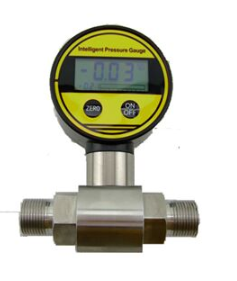Locally mounted controllers used on all pressure vessels include the displacement, caged ballfloat, internal ball-float, and differential-pressure types. Main keywords for this article are Local Level Controller Types. Displacement Controllers. Ball-Float Controllers. Differential Pressure Controllers. Level Controller Installation.
Local Level Controller Types & Design Requirements
- The output includes Proportional-plus-Reset Control with either a 3 to 15 or a 6 to 30 psig (0.2 to 1.0 or 0.4 to 2.0 bar) output and either direct or reverse action.
- The controller operates over a wide range from an ambient temperature of (-)40 °F to (+)160 °F (-40 to +71 °C) and a process temperature up to 1100 °F (593 °C). Temperatures listed are with standard materials. Depending upon the process and ambient temperatures, a heat insulator may be required.
Displacement Controllers
- Controllers sense the liquid level of a vessel and produce a standard pneumatic/electronic signal. Because a displacer is used as the primary sensing element, these controllers may also be used to measure the level of a liquid-to-liquid interface or the density of a liquid. The controllers each have the displacer located in an external cage that mounts to the outside of the vessel, or the controllers mount directly to the outside of the vessel (without a cage) with the displacer inside the vessel.
- For Liquid Level or Liquid Interface measurement, ranges are determined by the displacer length. Several standard displacers are available for ranges 0 to 14 in. up to 0 to 120 in. (0
to 356 mm up to 0 to 3048 mm.) For Density measurement, the displacer volume determines the upper range limit of the change in density. - Where a cage and head are used, they shall be steel or alloy steel, depending on pressure rating and controller type. The displacer will be 304 stainless steel as a minimum. The torque tube will be K-Monel or equal, other wetted parts will be 316 stainless steel as a minimum.
Ball-Float Controllers
- Pneumatic and Electric controllers generally are used in clean services for the direct operation of valves or electrical switches for alarms or pump motor controls. Where they are installed directly on vessels.
- Internal ball float controllers typically are is used for a asphaltic or waxy fluids, for cooking service, or where the liquid contains particles or materials that tend to settle out and would eventually block the float action in an external cage type instrument. On severe coking applications, it may be desirable to use a steam or flushing-oil purge to keep the shaft free and the packing in good condition. In such applications, it is preferable to use a dip-tube, purge-type, or a differential pressure type level transmitter and controller where possible.
Mechanical Type
- Mechanical controllers generally are used in water service and consist of a mechanically actuated valve, connected by a shaft or lever linkage to either an external caged float or an internal float. Installation of the float mechanism is the same as that for a pneumatic or electric ball-float instrument. Care must be taken to ensure that the action of the float is not restricted and that it is protected from turbulence. Furthermore, the valve and the piping must be installed and supported so that there is no strain on the valve or packing gland and no interference with linkages or levers that might prevent full travel of the float and valve.
Courtesy be Alibaba.com
Differential Pressure Controllers
- This type of instrument may be in the form of a controller integrally mounted on a highdisplacement-type differential pressure unit. However, the most common use of differential pressure instruments in level control is to use a differential pressure transmitter with a separately mounted receiver controller.
Level Controller Installation
- Local level controller shall be installed in accordance with requirements INSTALLATION PROCEDURE OF LOCAL INSTRUMENT INSTALLATION.
- Where the float will be subjected to turbulence within the vessel, shielding, guiding or other provision should be made to eliminate the effects of turbulence on the float, refer to Displacer Level Measurement Design.
- In severe services, it is recommended that the controller be supplemented by another type of instrument (for example, a differential pressure or other special type).



